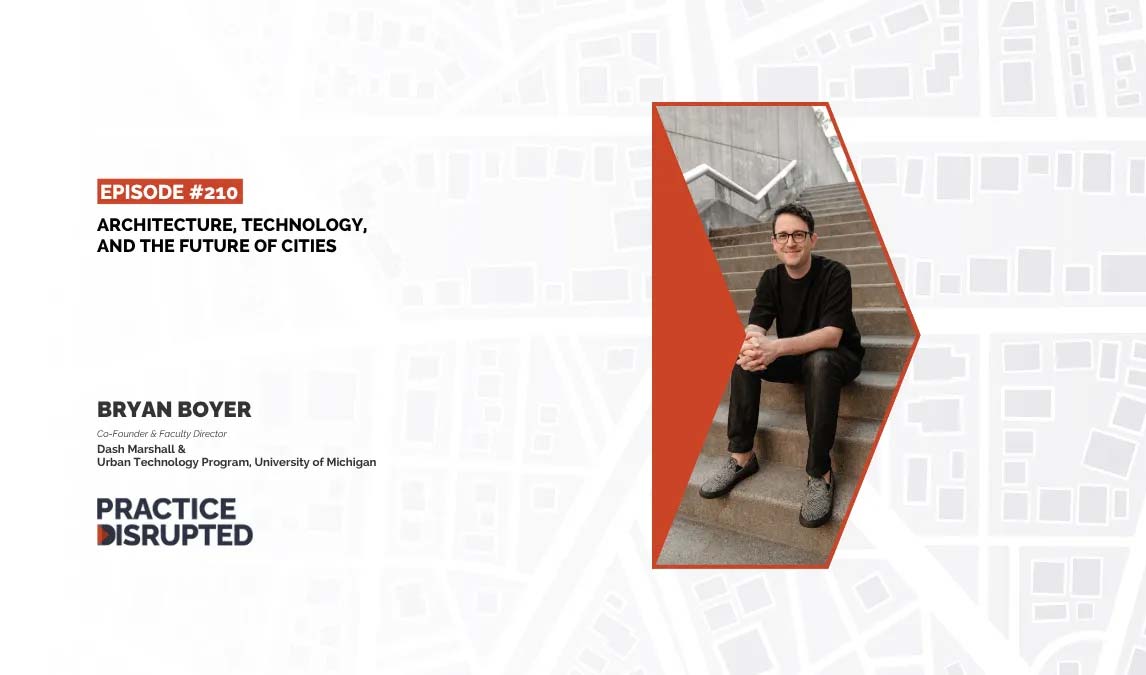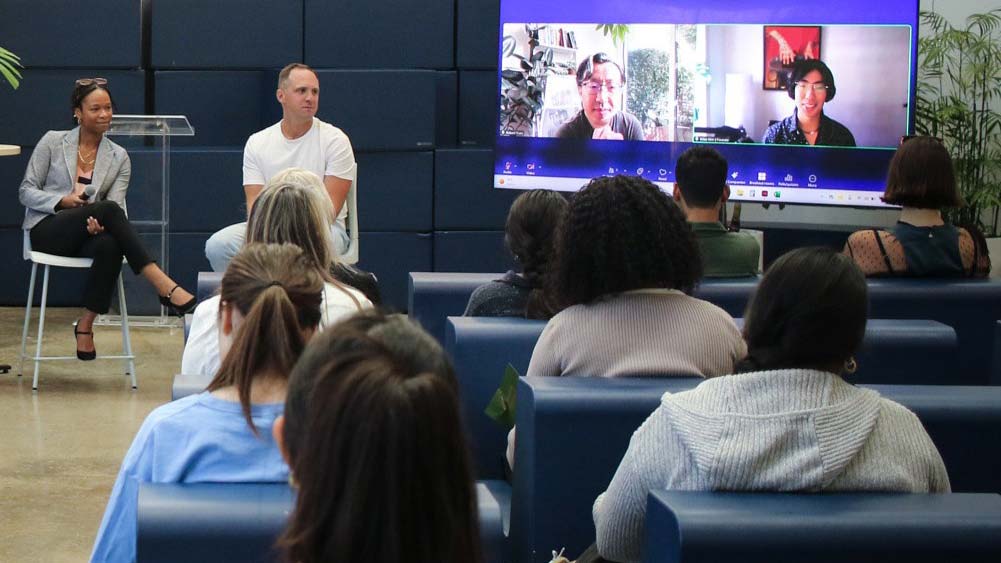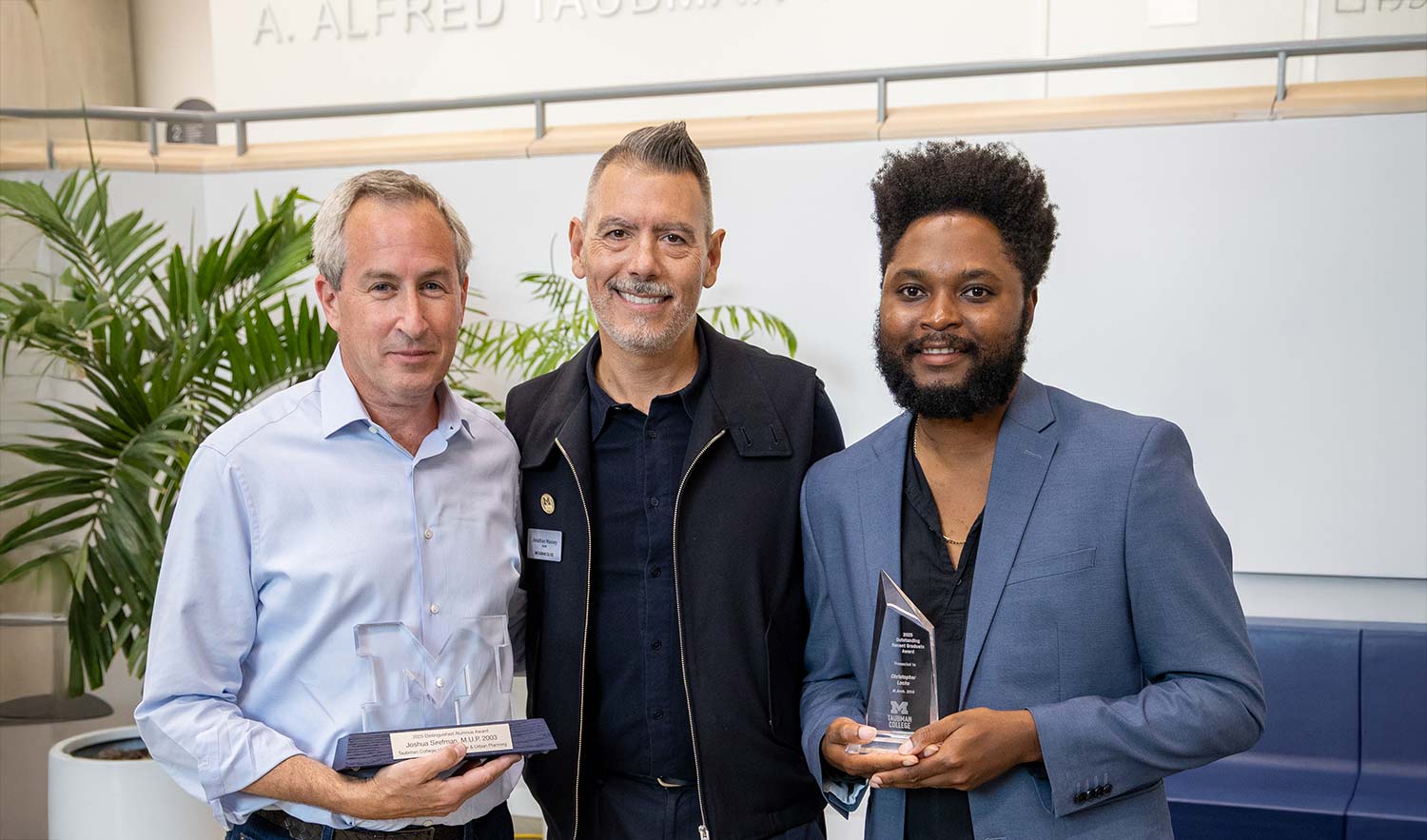
Boyer discusses future of tech in architecture and planning on Practice Disrupted podcast
Taubman College’s Bryan Boyer sat down with the Practice Disrupted podcast last month to discuss his early career, the urban technology program, and the future of technology in the architecture and planning fields. Boyer, faculty director of the Bachelor of Science in Urban Technology and professor of practice in architecture, joined the college in 2019 and worked with Dean Jonathan Massey to develop the urban technology major.
In the Oct. 2 interview, Boyer pointed out that the architecture, engineering, and construction (AECO) fields have been slow to digitize and consolidate. He pointed to a few reasons for the lack of innovation, including a lack of horizontal integration in the AECO supply chain and the business of architecture, which doesn’t leave room for innovation.
“Our work on the design and formulation of the built environment is horizontally disaggregated,” Boyer said. “The architect works with the engineer, they both work with the construction manager, and there are a bunch of subcontracts under that. In aggregate, the team that it takes to produce a new building or public space is extremely fragmented horizontally, and that produces a situation I think of as ‘chain drain,’ as in the intelligence is draining out of the supply chain at every link that’s there.”
This struggle to digitize is part of the motivation behind the urban technology program, which Boyer said is designed to be distinct from an architecture degree.
“When I worked at Sidewalk Labs, I worked very closely with Dan Doctoroff, the CEO,” Boyer said. “Dan used to say we were bridging the gap between the urbanist and the technologist. The way I think about it, with our degree program, the goal is to create a generation of students and professionals that don’t believe that that gap exists, because it doesn’t. That’s how old silos of expertise have organized the world, but our actual experience of the city is fully physical and fully digital in 2025, that’s the reality of it.”
Boyer said not many faculty were excited about the program when it was first announced, but he worked hard to demonstrate how the curriculum connects with architecture and planning.
“The amazing talent and energy of our students did a ton of work,” Boyer said. “Once they showed up and people saw them in the classroom and saw them in the building they said, ‘Wow, this isn’t an architecture student, but they’re really interested in making the city better; this isn’t a planning student but they’re really excited about affordable housing; I don’t care what they call themselves, they care about what I care about.’ That was very important for us, and we intentionally tried to bring in people from across the college to make it take root.”
Practice Disrupted is a podcast run by Practice of Architecture, a website that bridges the gap between architects and business strategy. Listen to the full podcast at Practice of Architecture’s website or wherever you get your podcasts.









